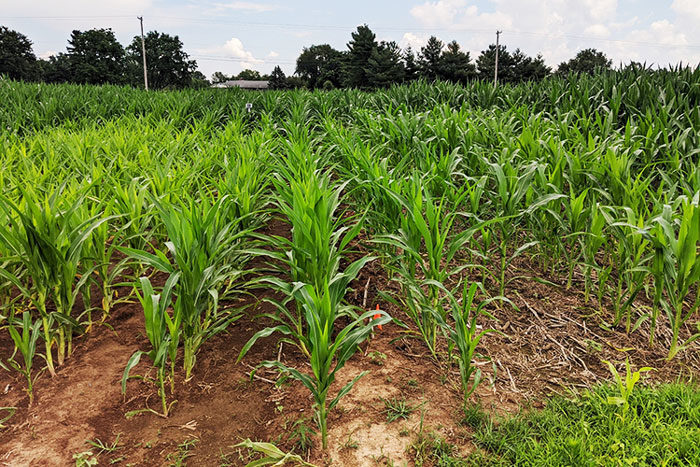A scientific study by experts at the University of Wisconsin says ethanol use increases — rather than decreases — greenhouse gas emissions.
The study "Environmental outcomes of the US Renewable Fuel Standard," slated for publication in the March 1 edition of the Proceedings of the National Academy of Sciences, used mathematical modeling to estimate the amount of cropland used for various crops. In particular, researchers examined land use increases seen under price increases in the past to build an estimate for how land use would differ under the same or expanded ethanol use in gasoline mixtures in the U.S.
Ethanol mixtures are currently controlled by the U.S. Renewable Fuel Standard (RFS). Increasing the amount of ethanol in fuel is a listed priority for the National Corn Growers Association.
As ethanol mandates increase, so do prices for corn, which shouldn't come as a surprise. Ethanol manufacture is the second-largest purpose for U.S. corn, and researchers estimate ethanol creates a 30% increase in corn prices. That increase also has a spillover effect on other crops, which receive a 20% price boost as well.
The increased prices in turn incentivize farmers to use more previously abandoned land back into cropland, instead of leaving it to sequester carbon or enrolling it in the Conservation Reserve Program (CRP). Researchers estimated that amounts to an 8.7% increase for corn acres and a 2.4% increase for other crop acres.
That, in turn, leads to increases in greenhouse gas emissions from two major sources: nitrous oxide and carbon emissions relating from corn. At the same time, land that was previously absorbing carbon begins to produce it.
"These changes increased annual nationwide fertilizer use by 3 to 8%, increased water quality degradants by 3 to 5%, and caused enough domestic land use change emissions such that the carbon intensity of corn ethanol produced under the RFS is no less than gasoline and likely at least 24% higher," the study's abstract reads in part.
Researchers only directly examined land use change in the United States — in some regions of the Dakotas, Minnesota and the Upper Mississippi, as much as 50-100% — but say some international land use change will likely result from the U.S. policy.
"While improvements in production efficiency have likely reduced the carbon intensity of corn ethanol since inception of the RFS, the previously underestimated emissions from US land conversion attributable to the policy are enough to fully negate or even reverse any greenhouse gas advantages of the fuel relative to gasoline," the study reads in part.
Randall Reeder, a long-time no-till advocate and recent inductee to No-Till Farmer's "No-Till Legends" list, said no-till could make all the difference.
"This research article is negative on ethanol because most corn ground is tilled," he says. "Somehow corn growers have to be convinced to switch to continuous no-till."
Without changes to U.S. corn production, public support for ethanol — and its ensuing benefits to farm bottom lines — could disappear entirely, Reeder says.
"If public opinion swings against ethanol from corn, these farmers in Iowa, Illinois and the rest of the Corn Belt will lose those sales and suffer reduced prices per bushel," he says. "Not bragging, but I pointed this out several years ago. Corn for ethanol in previous reports was always about even on carbon. I emphasized the switch to no-till would make the balance in favor of corn ethanol."
"The National Corn Growers Association needs to face reality about ethanol," Reeder adds. "Trying to add 15% ethanol to gasoline, they are facing eliminating even the 10%. In addition the swing toward electric vehicles would eliminate gasoline and diesel completely. Maybe it's time farmers stop complaining they would lose 5 to 10 bushel per acre with no-till. If they lose ethanol, their loss will be a whole lot worse.”
The research does not account for other improvements, says Guy Swanson, a key figure in no-till in the Palouse area of the United States. He points to the end of previous CRP contracts as one source of increased cropland use.
"CRP contracts matured and continue to mature on 10 or 20 year sign ups," he says. "It is maturity that causes the decline. CRP is not a viable option for the land if the government pricing is not competitive."
Increased fertilizer placement efficiency — an offshoot of both no-till and precision agriculture — also helps mitigate nitrous oxide emissions, Swanson says.







